Having difficulty finding the perfect curtains in the store, it makes sense to think about how to sew them with your own hands. Simple and clear instructions that are freely available, allow you to implement almost any ideas.
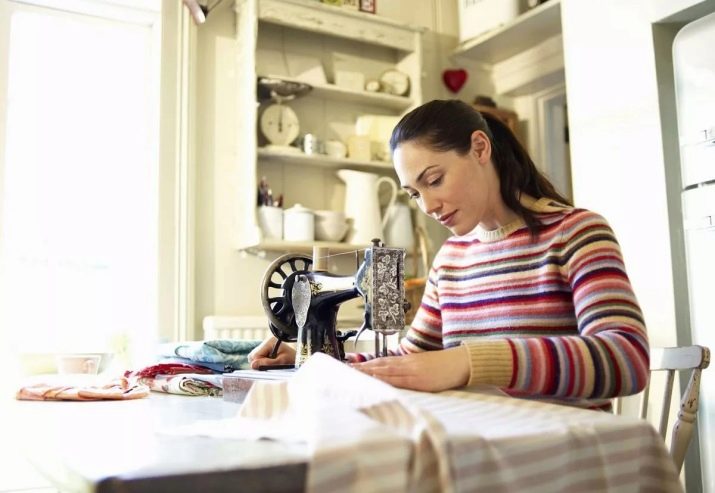
Homemade Curtain Requirements
Despite the fact that home-made curtains are the result of the imagination of the master, to create a harmonious decor it is worth being inspired by some common designs. All curtains are usually divided into the following main groups:
- french curtains look elegant and elegant, they are decorated with a large number of folds, quilling and similar decorative elements, so they are not at all suitable for modern styles; French curtains are created from silk, satin, taffeta or organza;
- London curtains easy to determine by the presence of satin ribbons, with which you can adjust their length;
- Austrian curtains look very voluminous due to the large number of folds, they are quite short and reach only the sill line; as a material it is customary to use wool or cotton fabric;
- Roman curtains It is customary to use to design a bedroom with a rectangular window; in their design, they slightly resemble blinds, sometimes they are also made on a lining.
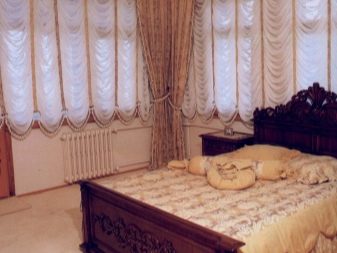
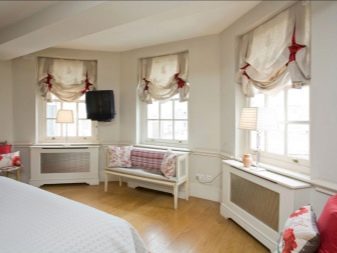

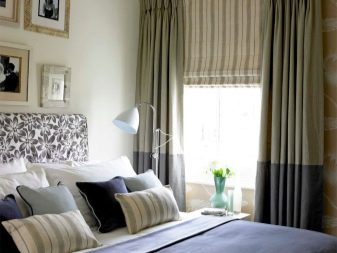
How to decide on the material?
For the design of the bedroom, there are a large number of textile options. In general, all tissues are usually divided into two main groups.
- Natural. These materials are quite dense and durable, so they should be chosen in cases where it is important to protect the room from bright sunlight.
For example, it can be linen or cotton linen, or even calico, perfectly complementing the interior in the Provence style.
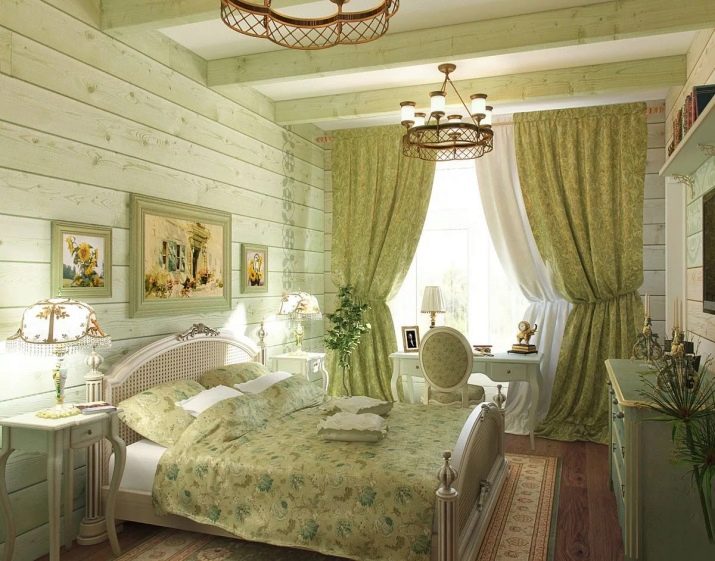
- Synthetic. Such canvases are light and transparent. Most often, organza, tulle or satin are chosen for sewing curtains from this group, which look luxurious on their own and practically do not crease. However, synthetics are suitable for a bedroom only if there is an additional natural layer, otherwise it will not cope with its functions. Recently, curtains quite often began to be sewn from blackout - a material that protects the space of a room from excessive light, as well as cold air. Thus, the stylish-looking material in the bedroom maintains temperature and light conditions.
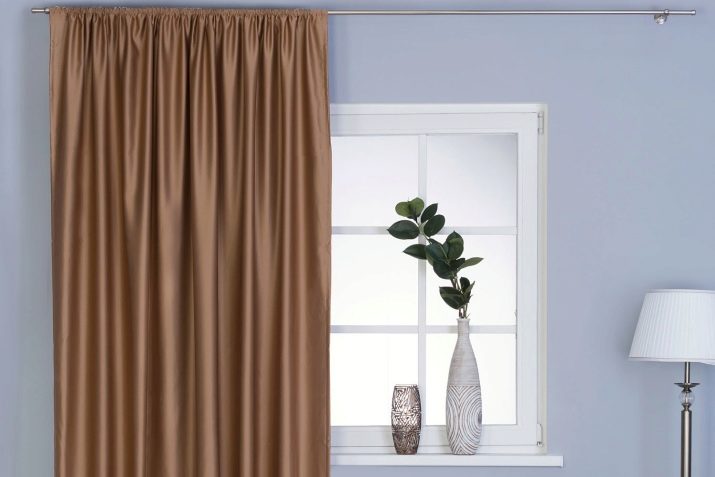
The color of the selected material should be calm, better even pastel or deep dark. Since we are talking about the space in which a person is resting, nothing should distract him from the process, even too bright patterns on window paintings. In addition, neutral colors fit seamlessly into any interior. To make the right choice, it is recommended that you take a few shreds of your choice in the store, bring them home and evaluate them already in the interior.
Important! For those who are going to sew curtains for the first time with their own hands, experts recommend giving preference to natural materials. The synthetics stretches, which means that an inexperienced tailor will experience certain difficulties both at the cutting stage and at the sewing stage.
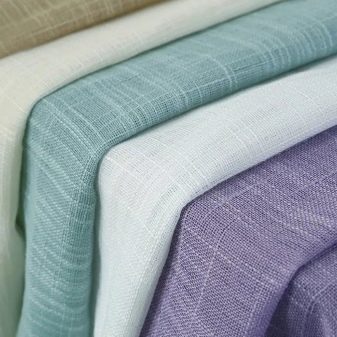
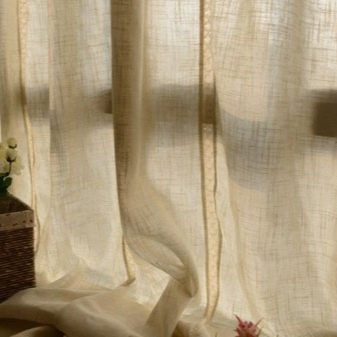
What tools will be needed?
In order for the fabric to be correctly processed on both sides, and the curtains themselves to please the owners with a long service life, it is necessary to use a number of important tools. In addition, you can not do without accessories. To create home-made curtains, you will need a cornice with the necessary details, holders, multi-colored threads with which basting and sewing will be carried out, pins, scissors, a centimeter, needles, as well as a long ruler. The main work will be carried out using a sewing machine, and the final processing - using an iron.

Sewing options
Wanting to sew the curtains correctly and beautifully, you must first find a pattern on the Internet or magazines, and also learn how to perform calculations. It’s wise to start experiments with your own hands with the manufacture of a simple single-layer curtain. The optimal material in this case is linen or cotton. Such a simple design allows sewing even without the use of patterns. It all starts with the fact that measured the size of the window, as well as a cornice placed on the ceiling or wall.
It is important that the width of the woven fabric is 10-15 centimeters less than the length of the cornice. As for the length of the canvas, the curtains can be both short - approximately reaching the windowsill, and long.
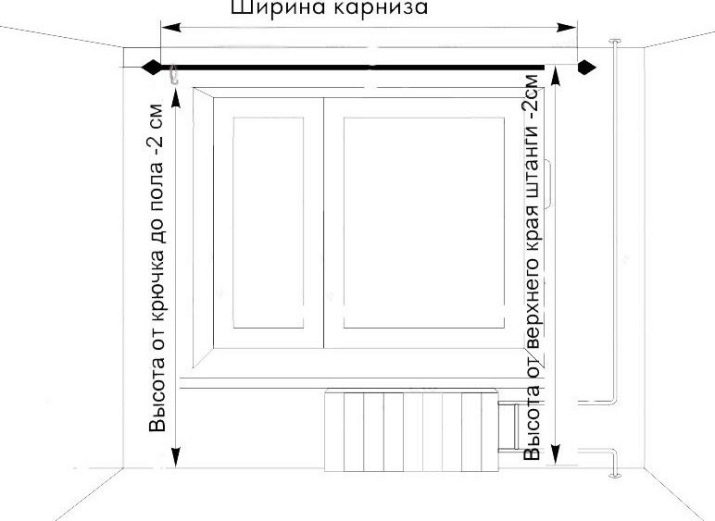
After the measurements are made, the canvas is cut. The sides are bent by a centimeter, sewn on a sewing machine and immediately smoothed out with an iron. From below, the curtain must be tucked somewhere by 2–2.5 centimeters, and then marked up, processed using a sewing machine and also ironed.


Similarly, the processing and the upper part of the canvas. In the same place, it is necessary to firmly sew on a tape equipped with pockets for lifting curtains. The finished curtain is ironed. The tape is adjusted to the width of the cornice, after which the canvas is suspended.
The design of such a simple curtain can be completely different, but since this model is most often used for country houses, it is better to give preference to the style of Provence or country. The curtains, by the way, can be double, that is, consisting of two parts with an additional tulle, but then the width of each should be calculated depending on the existing conditions.
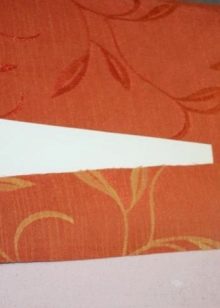
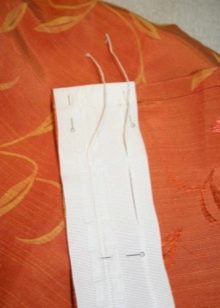
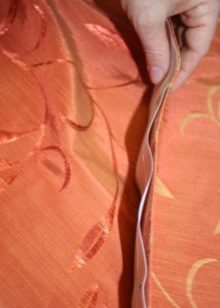
Currently popular original ideas of roman curtains. Their own production requires special fasteners, which are plastic knitting needles and weighting agents. In addition, to fix such a model, it is easy to adapt the designs used for blinds. Usually, Roman blinds are used for windows whose sides are 140 and 150 centimeters.
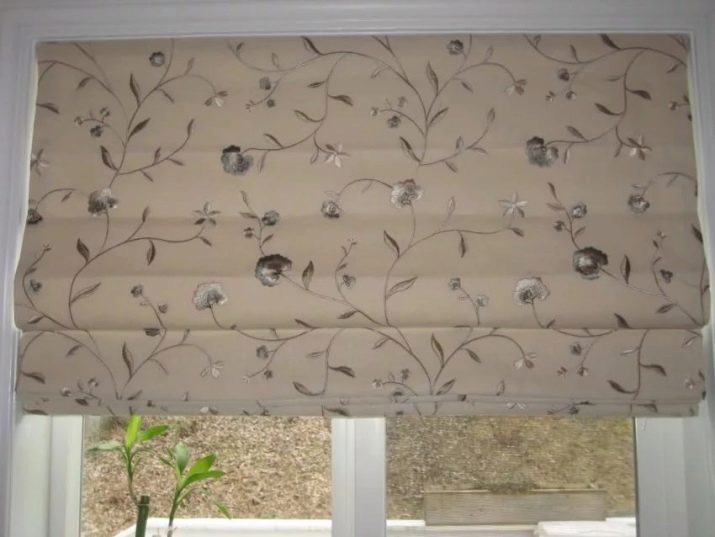
Preparation begins with the fact that the window opening is carefully measured, since the resulting curtain should cover its entire perimeter. The selected fabric should be washed and ironed beforehand, otherwise a distortion of the intended shape may occur in the future. On the side seams, 5 centimeters are measured on the fabric, and 15 centimeters are measured from the bottom and top. Five centimeter bends are ironed on both the main and the lining sides. A tape with pockets or adhesive tape is secured at the top, provided there is a suitable cornice.
The fold size is calculated as follows:
- first, 6 centimeters is taken from the total length;
- the remainder is divided into 5 identical parts using pins.
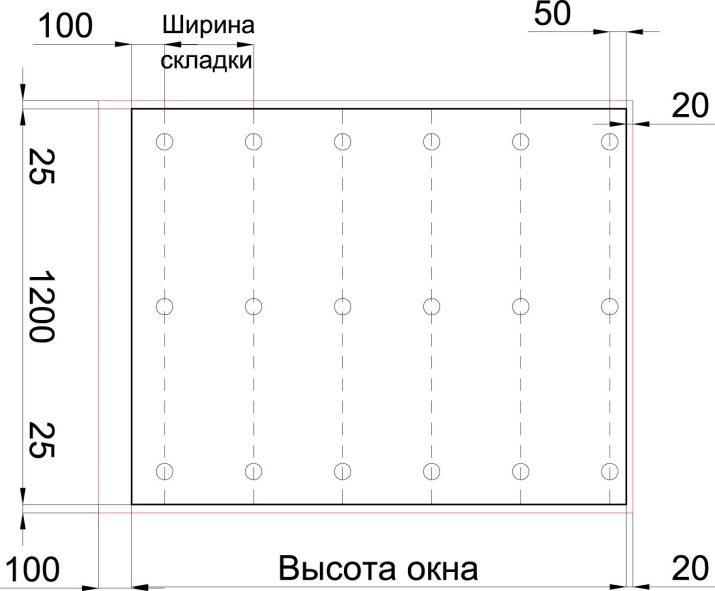
Further, the main fabric is covered with a lining, and the grooves for the needles are stitched at the bends. Above them, at each level, 3 rings are sewn. At this point, the rope mounts should already be installed at the required distance right on the window. The main and lining fabrics are fixed directly under the rings, one stitch will be enough.
Further, the ropes gradually extend through the rings, and spokes are installed in the grooves. Perform this action more conveniently according to the instructions. The grooves additionally need to be sewn on each side, and on the side to notice the main part and the lining part. The bottom of the curtain is weighted with a plumb line, after which the curtain is hung on mounts.
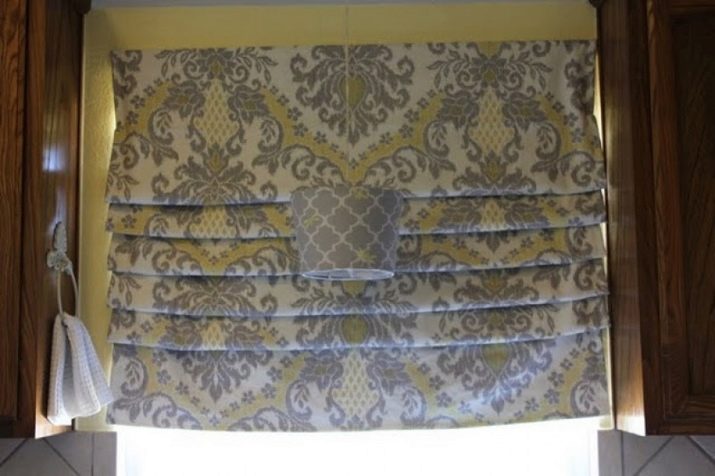
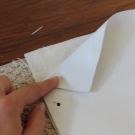
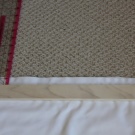
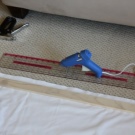
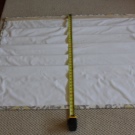
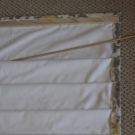
The cut of French curtains is very complicated, but even they can be created at home. The curtain is a wide and long canvas, decorated with numerous folds. Festoons in this case are made thanks to drawstrings with cords or a special curtain tape equipped with pockets. Numerous decor allows you to show the imagination of the craftswoman, as in this case, a variety of ribbons, rhinestones, bugles and other details look good. The length of the sides of the French curtain reaches 2 meters.
It all starts with the fact that the canvas is being prepared, the width of which is 300 centimeters, and the length reaches 440 centimeters. Further, it is divided into 4 parts, after which each is also divided in half. The length of each part is processed with a French linen seam. If everything is done correctly, then it will be enough just to stretch a pin with a cord, and bend the side seams by a centimeter and a half.
The lower side, along with the laces, is bent by 1.5–2 centimeters, after which it is fixed on a typewriter. Existing laces are pulled into scallops and beautifully straightened so that the length is 175 centimeters. The upper part requires tucking again together with the cords and fixing. Finally, a ribbon with pockets is sewn on top, and the finished curtain is placed on the ledge.
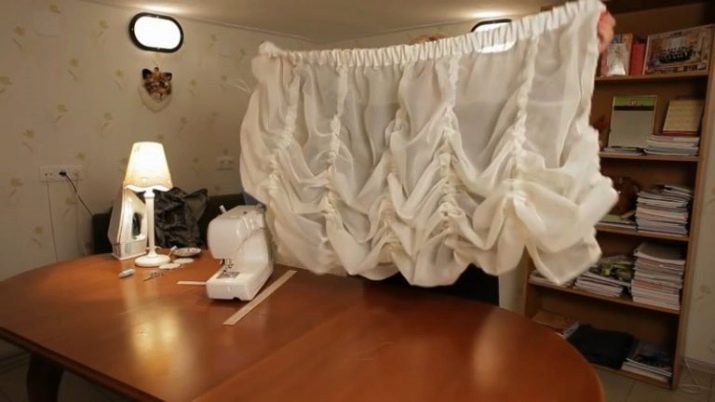
Useful Tips
Experts recommend that novice craftsmen use only one active decorative element when sewing curtains, even when it comes to French curtains. Trying to combine grommets, tassels and lace, you can create an excess and vulgar-looking decor item. In addition, combining curtains and curtains on the window, you will have to make sure that the former always look easier than the latter.
In general, during initial sewing, it is better to conduct a training first - take a small section of the same fabric and transform it into a small curtain.
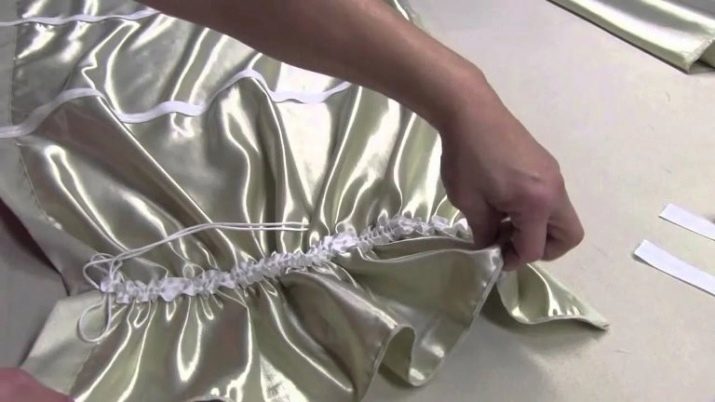
It is necessary to buy fabric for curtains in the corresponding department of the store, since other and not intended for this purpose canvases quite quickly fail.For a multilayer construction, in principle, fabrics of different colors can be used, but they are a variation of the same color palette. Cutting material, you should control cutting only along the canvas itself.
Care for curtains should be considered - for example, in no case should you iron with a satin, tulle or organza with a regular iron. In this case, a steam generator will come to the rescue. A faded curtain makes sense to try to repaint at home.
You will learn how to sew a French curtain on your own from the video below.










